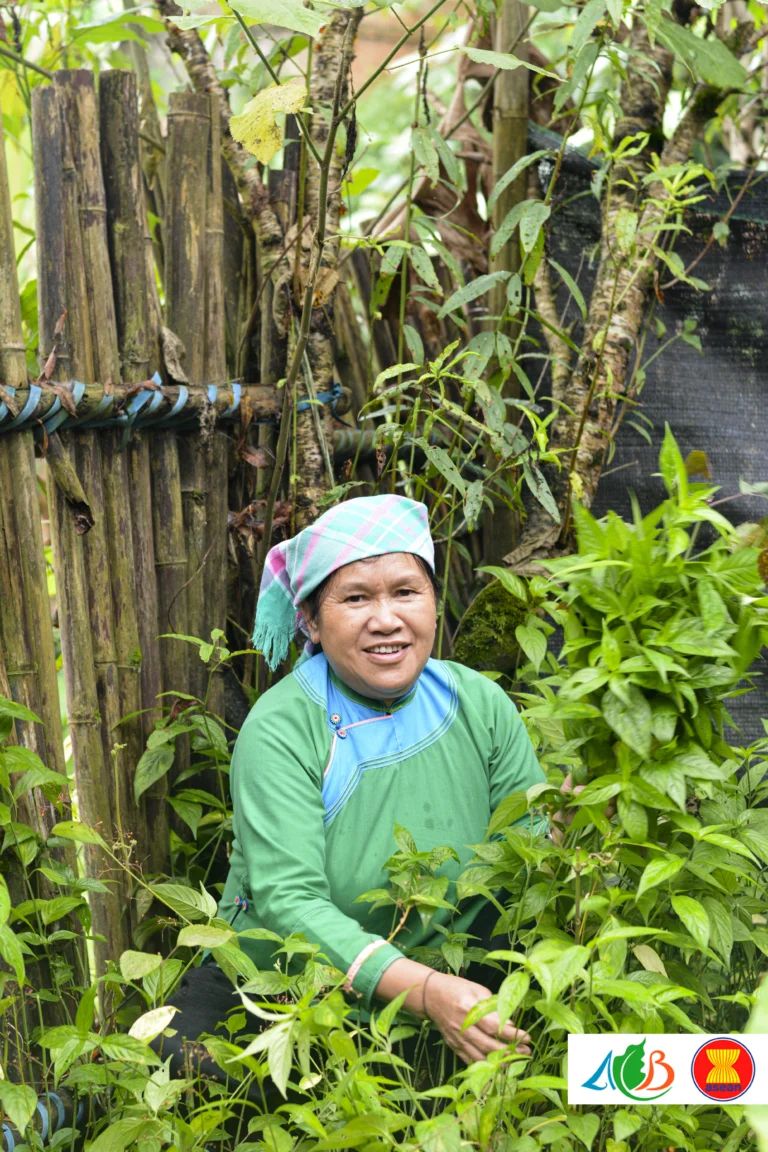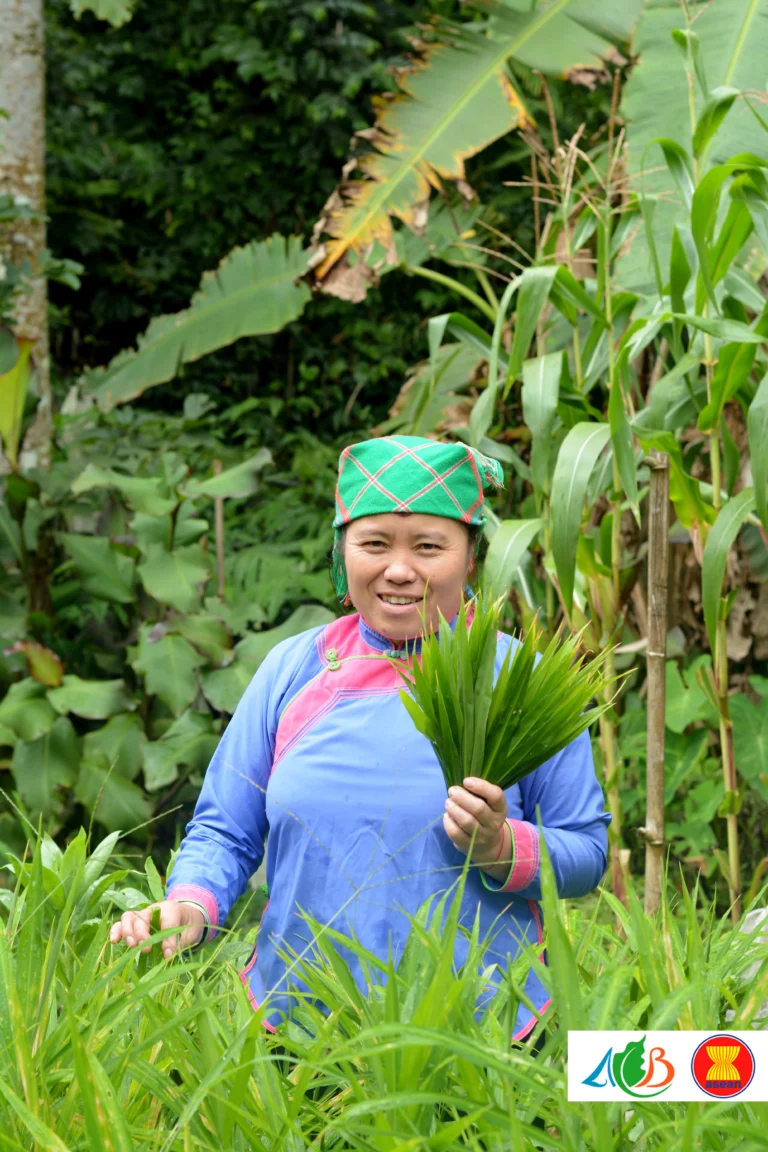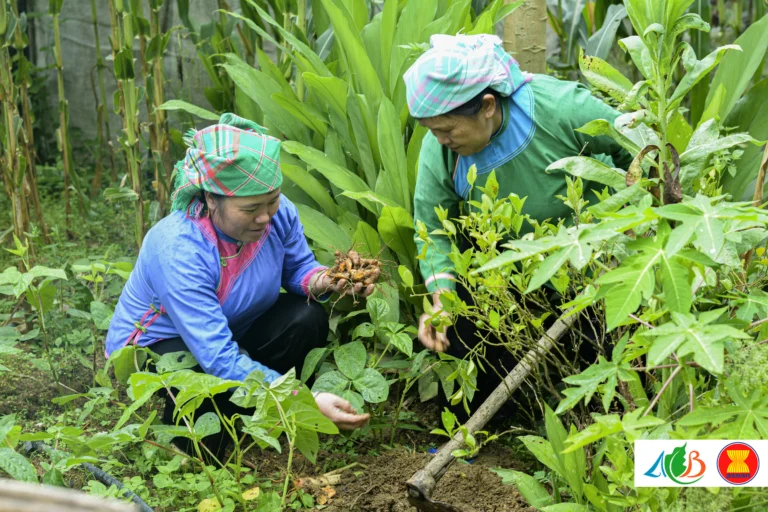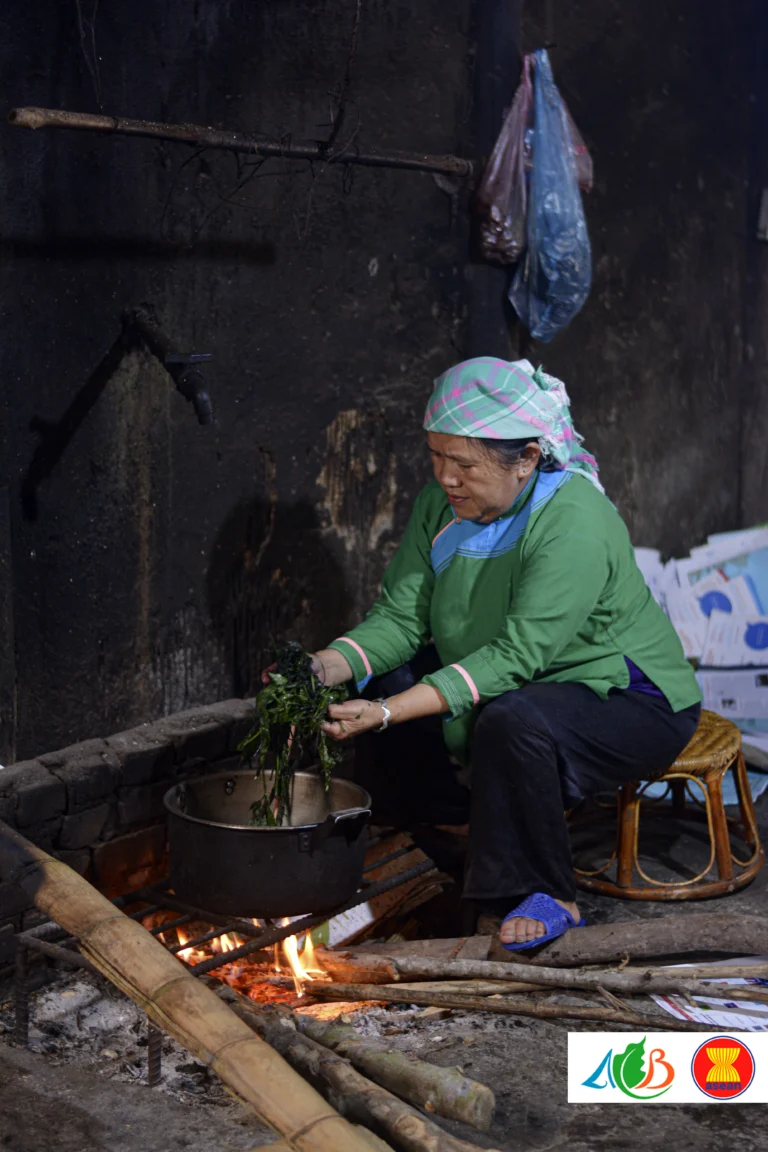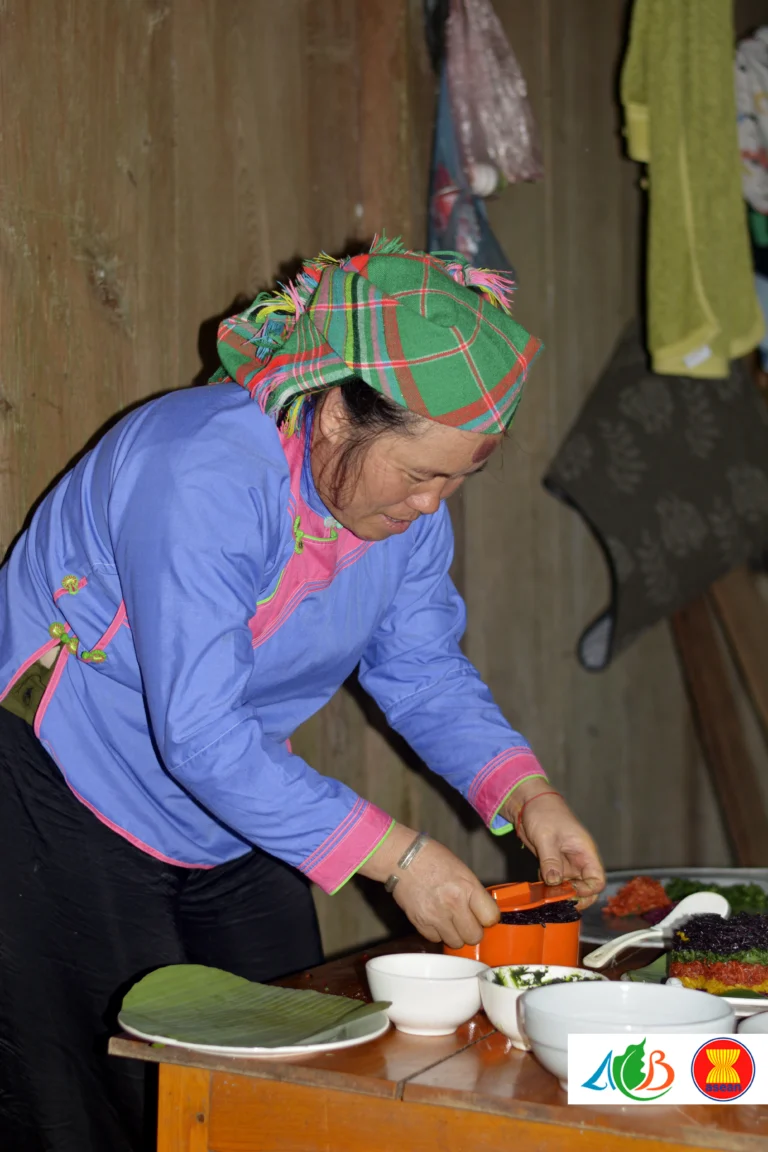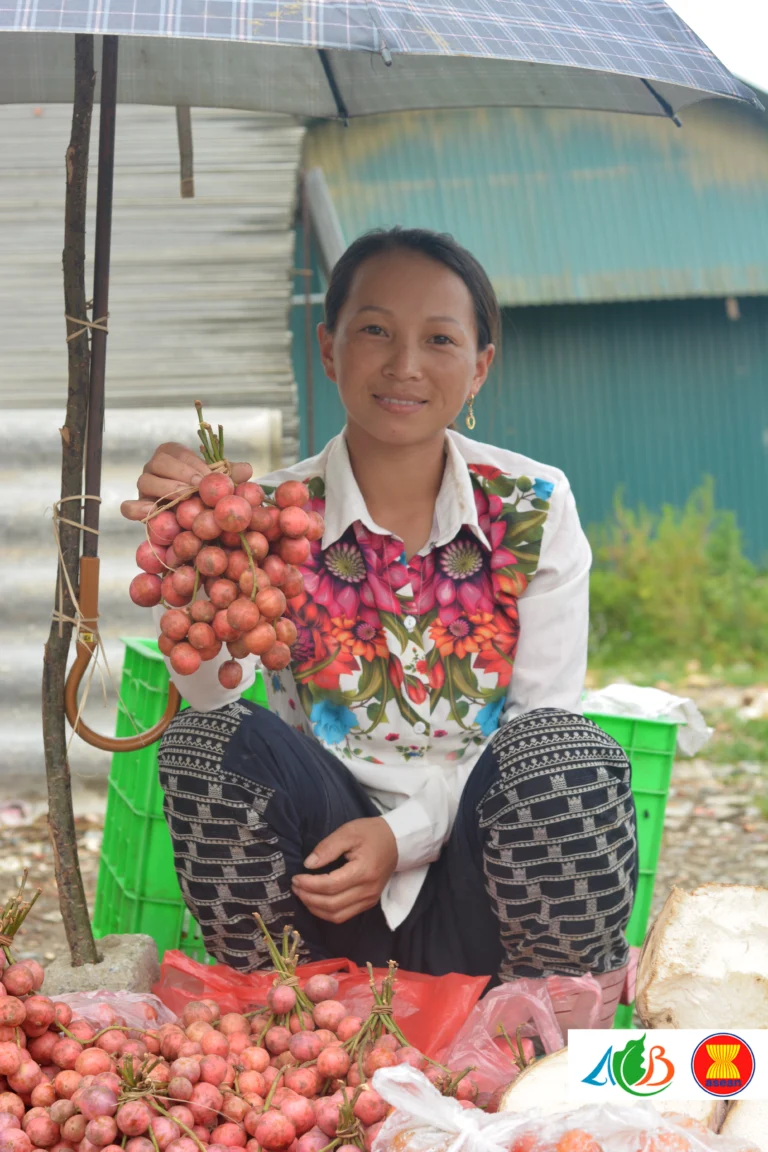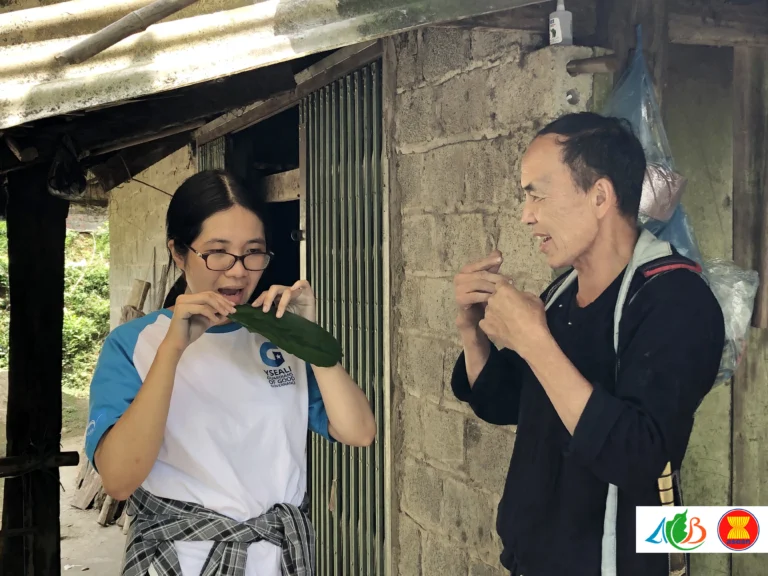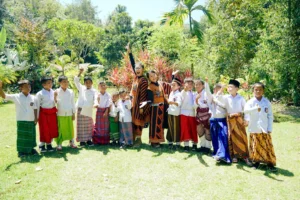

Biodiversity and Ethnic Groups
HOANG LIEN NATIONAL PARK
The Giay five-colored sticky rice
The Giay five-colored sticky rice is not only delicious but also very beautiful and carries a lot of special and profound meanings. The reason why it is called five-color sticky rice is that this sticky rice has 5 basic colors including purple, blue, yellow, red, and white (or dark purple).
The Giay people often make this special sticky rice dish on special occasions of the year such as New Year’s holidays or weddings, anniversaries… According to the concept of the Giay people, the meaning of five-color sticky rice in addition to expressing the “five elements” also expresses the desire for love. This sticky rice shows love for the mother, respect for the father; love, and fidelity of the couple, and also symbolizes luck and good things.
Red sticky rice symbolizes the desire to live and dreams of a bright future.
Purple sticky rice represents the color of the rich land. For ethnic people in the North, the land is a precious thing that needs to be preserved and developed.
Yellow sticky rice symbolizes prosperity and prosperity, expressing the desire for a peaceful and full life for the people.
Green sticky rice will represent the color of the Northwest mountains and forests, the green of trees, forests, and shifting fields.
Dark purple shows love to mother, respect to father
Those who have had the opportunity to enjoy five-color sticky rice will not be able to forget the special aroma of the rice. The leaves give color to the sticky rice.
According to oral stories, the Giay people from ancient times went to the forest and found many kinds of leaves for natural dyeing, but the taste was not good. Then, through some spiritual stories, they found the necessary leaves to create a colorful dish.
In the past, whenever they need to make Five-color Sticky Rice, the women had to go to the forests to look for them. Luckily, nowadays, five-color sticky rice has become not only a traditional cuisine but also a delicious specialty that travelers from everywhere love. As a result, people decided to grow the trees right in their garden and then sell the leaves at the market. These naturally colorful leaves will then be used to make the wonderful sticky rice that enchants everyone. Biodiversity has actually influenced the Giay people’s culture and given them chances to creative and make their own unique things.
THE HMONG LEAF TRUMPET
H’mong people are an important member in the community of ethnic minorities in Vietnam with about one million people, ranked 8th among 54 Vietnamese ethnics. They often occupy the upland areas, from 800-1500m above the sea level, mostly in the Northwest and a few in the central highland of Vietnam. You can easily spot them in Ha Giang, Lao Cai, Sa Pa, Lai Chau, Son La and several other provinces.
When we visit the H’mong villages, we frequently encounter boys and girls with leaves on their lips, making sounds and echoing. The leaf trumpet, a basic but very unique musical instrument of the Mong people, is compared to the song of the nightingale in the mountain.
The trumpet is the most basic musical instrument, the easiest to find, and the fastest to construct. To blow skillfully and complete a piece of music, however, it is necessary to be a genius while selecting leaves and blowing leaves. The blower must select leaves that are slightly soft, relatively tough, and have smooth edges
The leaf trumpet can be played in a variety of ways, although it is most usually employed in two ways. The first method is to hold the leaf horizontally between the lips, using the lips to hold it and combining the use of the tongue and slightly pushing it out through the gap between the lips. The second one is to use the index fingers and thumbs of both hands to grasp the two ends of the leaves after they have been held in the lips, and then use the tongue in conjunction with the lips to push the air to make a sound. When blown, the leaves used as trumpets are folded in half at the thinner edge of the leaves and held in the lips, adjusting the high, low, and pitch slightly.
How leaf trumpet sounds
THE RED DAO HERBAL BATH
The Red Dao are one of 54 ethnic groups living in Vietnam. Red Dao communities settled in the high mountains of Hoang Lien range mountain in the 18th century, bringing with them their own social structure, language, costumes, and rituals, including health rituals. Associated the life with mountains and forests, so they have a lot of knowledge about medicinal plants in the forest and experience in using them in daily life. The Red Dao are renowned for their healing baths, which are made from medicinal plants foraged in the forest. Each family has its own herbal bath recipe, which is held by the women in the family and passed from mothers to daughters. When tourism develops, the bath medicine of the Red Dao people becomes the most unique tourism product here.
Herbal baths are made in Red Dao communities for women a week after giving birth to assist them to regain vigor. During the frigid Sapa winters, the baths are also utilized to relieve muscular and bone aches, as well as to ward off colds and flu. In terms of modern wellness, the baths mix hydrotherapy and aromatherapy to stimulate blood circulation, soothe the mind, and relieve body discomfort. The plants in the bath gently cleanse and soothe the skin.
Red Dao baths can contain up to 20 components, including rare herbs. Elderberry, Vietnamese balm, fig leaves, wild pepper leaves, bur-reed, tropical dogwood, and cinnamon are also common ingredients. To generate a sweet-smelling, wine-red combination, stems and leaves are chopped, dried in the sun, then boiled for hours over a fire. Bathtubs are handcrafted from Po mu, a species of cypress wood that imparts a grounding scent to the hot water.
Red Dao baths are normally set up in small, enclosed rooms so that the bather may inhale and enjoy the aromatic steam from the bath. To enhance the aroma, add lime leaves, star anise, and orange peels soon before the bath begins. Finally, all that remains is to slip into the warm, frothy water and rest. Pour warm water over your back and shoulders with a scooper, scrub your skin with leaves or a washcloth, or simply lie back and relax as the bath does its magic.
What’s more amazing is that thanks to biodiversity, local people have received traditional remedies for their daily life, which have since become a unique commodity that both domestic and foreign tourists want to enjoy. I myself also slipped into a steamy bath and the aroma was heavenly. Such a great experience! If you get the opportunity to visit Sapa, you should try it.
With the high demand for herbal baths, the Red Dao cooperative in Ta Phin, Sapa has developed an independent growing area of medicinal plants with a large area. It helps them to bring this unique commodity for more and more tourists.
Share On:
Facebook
Twitter
LinkedIn
Email
Related stories:
The views and opinions expressed by the Young ASEAN Storytellers should not be taken, in any way, to reflect the official position or opinion of the ASEAN Centre for Biodiversity, its partners, the ASEAN Member States, and the ASEAN Secretariat.



